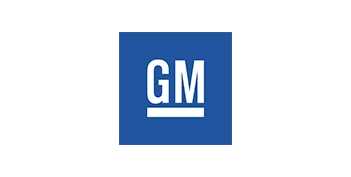GM reconfigures maintenance rules to increase throughput by 5%

- Industry
- Automotive
- Location
- Port Melbourne, Australia
- Project goals
- Increase throughput without increasing costs
Achievements with Simul8
-
-
Increased throughput by 5% to meet demand without increasing costs
-
-
Discovered removing excess system carriers actually increased capacity in the line
-
-
Redistributed maintenance to improve uptime at critical bottlenecked areas
About the project
GM Holden, a subsidiary of GM, is Australia's largest automotive company and is GM’s niche manufacturer of rear wheel drive 6 & 8 cylinder vehicles. This includes all production processes through plastics component manufacturing, stamping, sheet metal and body fabrication, paint and vehicle assembly.
Doing more for less is the new corporate mantra across the globe, as business leaders are challenged to find smarter and more efficient ways of working. Simul8 helped GM do exactly that. By developing smarter maintenance rules GM increased its throughput by 5%, meeting increased demand without increasing costs.


"We increased throughput without increasing overheads. Using Simul8 lets us stay flexible when planning resource to cope with demand fluctuations."
Virtual Manufacturing Engineer, GM Holden

The result
Using Simul8, GM Holden created a virtual simulation of their assembly line. They replicated the increase in demand, with the simulation visually highlighting where bottlenecks would build up. Using the simulation, the team could quickly experiment with different ways to remove these bottlenecks, increase throughput and thoroughly assess the impact of their ideas.
Reduced maintenance costs
GM Holden found that redistributing maintenance resource to improve uptime at critical bottlenecked areas was the most effective approach. This reduced maintenance costs and saved on the expense of hiring new production workers, allowing GM to remain flexible and return to lower production rates if demand slowed down.
Decreasing capacity to increase throughput
The real bonus came in discovering that an excess of carriers in the system was actually causing a blocked effect. Removing two carriers actually increased throughput by 5%. These carriers could then be used for spares, further improving production rates.


"Vehicle manufacturing is a highly competitive industry and we need to remain flexible to cope with fluctuations in demand. Simul8 has been a highly effective tool for us in achieving that flexibility."
Virtual Manufacturing Engineer, GM Holden

Learn more about Simul8 for automotive manufacturing process improvement
Find out more about how simulation is used by manufacturing organizations, read more case studies and access a range of learning resources.
Learn more